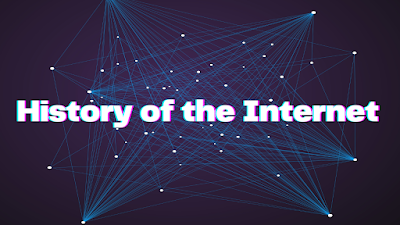The world's first Internet was born with the creation of a research computer network, which was called ARPANET.
The world's first Internet was born with the creation of a research computer network, which was called ARPANET .. Its main task was to switch packets of the Agency for Advanced Research Projects of the US Department of Defense. The prerequisite for the creation of such a network was the launch of an artificial Earth satellite in the USSR in 1957. After this event, in order to increase the degree of information security in case of war, the United States Department of Defense urgently ordered the development of a reliable system for data transmission and allocated the necessary funds for this. The special agency DAPRA, which was responsible for the introduction of new technologies in the United States, took up the issue of creating a computer network. Over time, APRANET has evolved and become in demand by scientists from various fields of science.
An attempt to establish the first network connection was made on October 29, 1969. Charlie Kline of the University of California (Los Angeles) tried to connect remotely to a PC located 640 km away at the Stanford Research Institute, where Bill DuVall confirmed the successful transmission of each character over the phone. However, of the five characters of the word "LOGON", which was a special authorization command in the system, on the first attempt, only the first three characters, "LOG", were transmitted, after which the network failed. However, after the return of APRANET to a working state a few hours later, the next attempt by scientists to establish communication at a distance was successful. The date 10/22/1969 can rightfully be considered the date of the appearance of the world's first Internet.
The first program for exchanging e-mails on the Global Web appeared in 1971 and immediately became in demand among Internet users. In 1984, a computer system for distributing domain names began to function, which made it possible to obtain information about the site area on the Web.
In addition, in 1984, another large-scale network NSFNet appeared, which was created by the National Science Foundation of the United States. It included many small networks, including the then popular Bitnet and Usenet, and had significantly higher bandwidth compared to the ARPANet network. Thus, the latter acquired a serious competitor. With over 10,000 PCs connected to NSFNet in less than a year, the word "Internet" has slowly become associated with it.
The creation of the IRC protocol - Internet Relay Chat laid the foundation for the first chat, which provided real-time communication between users. This happened in 1988.
However, the Global Network became the main supplier of data only by 1995, when its traffic exceeded the widespread FTP file transfer protocol in terms of the amount of information sent. This was the impetus for the creation of the W3C, the World Wide Web Consortium. It is worth noting that it was the latter that shaped the previously faceless Internet. Thus, since 1996, the terms " Internet " and " World Wide Web " have almost completely replaced each other.

Comments
Post a Comment